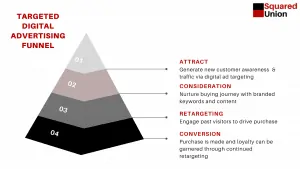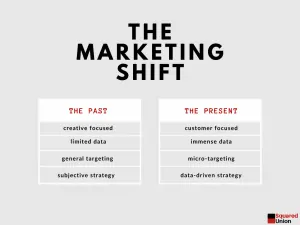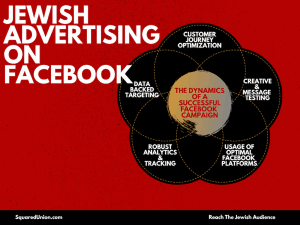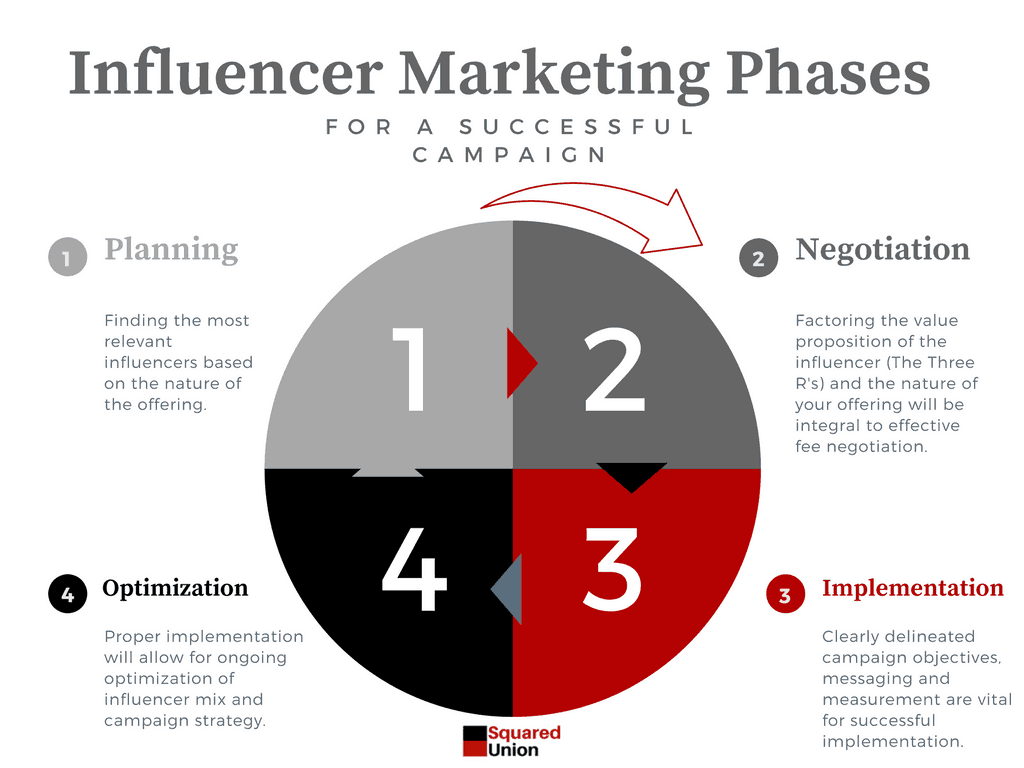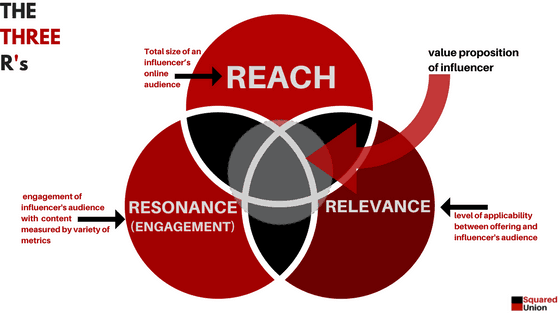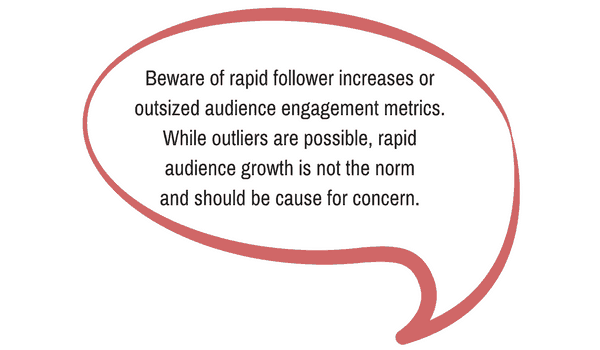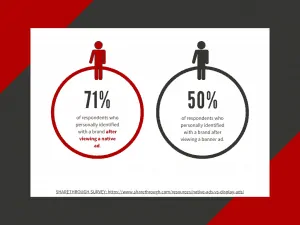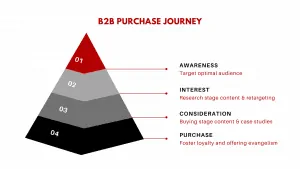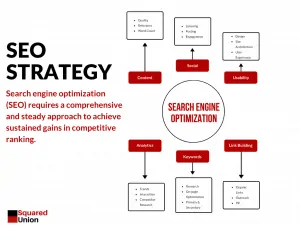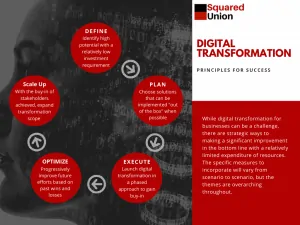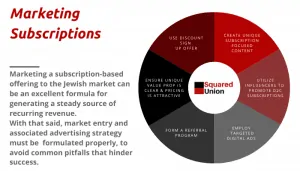The State Of Jewish Advertising In 2020
A Comprehensive Summary Of The Landscape
The state of Jewish advertising 2020 is a dynamic and ever-changing landscape happening at a progressively increasing pace. For the most part, these changes have been brought about by the immense advances in technology. More specifically, the move away from analog advertising, such as via print toward digital platforms like Facebook and Google, has radically transformed the marketing ecosystem.
Keeping up to date with these fast-moving changes as they relate to mass-market campaigns often overwhelms. This feeling of inundation is often and understandably compounded when it comes to Jewish centric marketing campaigns. After all, marketing to such a specific segment of the population requires campaign machinations that need to be all the more exacting, and associated know-how is further nuanced.
To bring clarity to the dynamic and, at times, quite befuddling world of Jewish marketing campaigns, in this discussion, we review the state of Jewish advertising in 2020. We summarise the core platforms, associated strategies, and project sourced insights to provide a greater understanding of how to market to the complex yet potentially lucrative Jewish market segment.
Jewish Search Advertising
Ads appearing in search are among the most basic and oldest, yet effective modes of digital advertising. It is widely utilized among marketers and is a baseline strategy for a wide variety of campaigns. Google dominates this field in terms of overall search volume and revenues. While the exact size of Google’s search share is unknown, reputable estimates put it at over 90%. Regardless of the specific number, Google is at the top of the heap by a long shot. The bulk of its 100+ billion-dollar revenue stream stems from its hallmark search product, Google Ads. While some are not aware, YouTube, which is owned by Google, has a large share of search volume and the core Google.com search function. There are other much smaller players in search and include the second in line, Microsoft’s Bing. Bing is minuscule when compared to Google, with an estimated 2.55% of global search volume.
Where Search Ads Work Best
With so much search happening on Google, it is no surprise that advertising on the platform is a top priority for marketers. The platform’s utilitarian nature lends itself to being a potentially wise investment for a practically infinite assortment of product and service offerings. With that said, because ads are displayed when users perform a search, relevant searches for a specific product or service need to be occurring for running associated ads to make sense. Therefore, in a scenario where there is limited search volume, ads for raising awareness, such as via display, which we discuss next, might be a better fit.
Besides the most commonly used feature of search marketing, traditional inquiry-based ads, there are a whole host of other related search-based ad products. For example, retargeting can be utilized and implementing a whole host of shopping and eCommerce focused search campaigns is also possible.
Cost Of Search Ads
The prices for search ads utilize a cost per click (CPC) structure. CPC is especially attractive for especially budget-conscious advertisers since levying of charges only occurs once a user clicks on an ad, and there is no minimum spend threshold. In contrast, impression-based cost, more commonplace with display ads, incur a charge even with no click on the advertisement. For CPC, each click’s price revolves around a competitive auction that Google conducts instantaneously for each search event. Advertisers can exercise strict control surrounding both maximum spend for individual keyword bids and overall budgets down to the day. CPC’s bidding aspect is advantageous on the one hand, but for very competitive sectors and associated keywords, CPC averages can skyrocket and box out new upstarts. With that said, there are various creative ways to decrease costs for CPC, even in highly concentrated markets, including bidding on long-tail keywords that are often less competitive.
Jewish Display Advertising
The term “display ads” is one that encompasses a vast swath of the already broad digital advertising landscape. In the most basic sense, these ads refer to the assortment of image, video, text, and audio advertising that forms the financial backing for much of the “free” internet. Whether it be your favorite news website or YouTube channel, there are generally ads that line the walls of these digital properties. Some have perhaps too many ads, and some might be overly intrusive, but regardless of one’s sentiments, they are likely classified as display.
Display ads originate from various places. Facebook and Google run some of the most extensive display advertising platforms where advertisers can purchase ads to reach their optimal customers through an assortment of targeting options. Beyond the internet giants, there are also much smaller and sometimes niche display offerings. The value of these more niche ad products ranges across the spectrum. Some might have an advertising inventory that might be of specific importance to an advertiser, so working with such a vendor might make sense in such a scenario. The core issue with many of the smaller players is that they often lack robust analytics, reliability, and, most importantly, transparency when it comes to pricing and ad viewability. The industry has been hit many times with instances of widespread fraud. As a general rule, Google and Facebook’s reach and reliability, and transparency mean that they are the first and often only stop for display advertising needs. Of course, if there is an excellent deal on a specific niche platform and the risk is minimal, or some other great potential is on the table, exploring such opportunities might be wise.
Where Display Ads Work Best
Display ads contrast with search in a stark manner. Whereas search ads are most potent when potential customers are actively searching for an offering, display works best to generate such demand and awareness. For example, a customer might not actively be searching in Google for a new luxury bag. Still, after seeing a display ad touting the elegant bag while browsing their favorite news website, they click the ad and purchase one.
We advise not to view as search and display as mutually exclusive. Instead, in most instances, they should be used advantageously in concert. To go back to the previous example, when the customer saw the display ad for a bag and was interested in buying, there is a good chance they will perform research on the brand and price, among other things, via Google search. When that search takes place, ads need to be displayed to target both branded keywords and product-based ones to increase the chance that purchase will be from the desired site.
While display ads’ deployment is most often used to create interest or otherwise raise awareness, through inventive targeting, those active already “in-market” customers can also be targeted. For example, for the marketing of a high-end kosher vacation, a display campaign can be implemented to target particular kosher-themed travel sites with relevant traffic likely to include the optimal customer profile.
Display ads are also the backbone of retargeting campaigns. For example, when a potential customer visits a website, a cookie may track that customer. When there is an implementation of such tracking, potential customers can be reminded of your offering while browsing other web properties. Retargeting can be very useful not solely in terms of its distinct ability to reach interested past possible customers but also to reduce costs compared to standard display campaigns.
Cost Of Display Ads
While search ads work on a cost per click (CPC) basis, display ads are generally charged at cost per mille (CPM), an impression-based structure. Mille is french for 1,000 and refers to the charge levied on an advertiser per 1,000 impressions. There are beneficial aspects to impression-based cost as well as disadvantages. Like Google Search ads, the price for Google display ads and other display vendors is generally calculated pursuant to an instantaneous auction. Therefore, depending on how competitive the bidding on relevant inventory is, the cost will vary.
Facebook, Instagram & More
Some are not aware, but Facebook, over the years, has added a significant number of popular digital properties under its broader corporate umbrella. Two of the most notable of these properties are their acquisition of Instagram for $1 billion in 2012 and WhatsApp for $19 billion in 2014. By all accounts, both of these investments have paid off in ways that Mark Zuckerberg and Facebook shareholders could have only dreamed. Instagram has seen the use of the app skyrocket over the last few years, especially after it introduced Stories, an alleged copy of Snapchat’s hallmark app feature. The same astronomical growth applies to WhatsApp, with the app subsequently being further integrated into Facebook’s ad products.
The advertising options on offer from Facebook and their ever-expanding lineup of platforms are regularly changing. These changes refer to the introduction of new targeting and creative options, but at times, they have also taken the form of a significant reduction in capabilities. The biggest change in terms of removing valuable targeting and related features occurred in the aftermath of the 2016 presidential election in the USA, including the alleged acts of Cambridge Analytica. Without delving into the politics and associated outrage, which caused the removal of advantageous ad features, the fact is that the platform lost some of its power. Further culling of targeting features treasured by marketers occurred in 2018 in response to exposes alleging discrimination relating to housing and other legally protected categories.
Regardless of one’s views in the hotly contested debate as to whether these changes are helpful or just a capitulation to pressure, the fact is that the loss of these features was especially detrimental in the context of Jewish centric campaigns. The primary reason for this outsized impact is that niche-focused ad campaigns rely more substantially on hyper-focused targeting mixes. These changes also highlighted the highly dynamic nature of advertising on Facebook. It stressed the need to continually stay up to date with developments as they relate to new features and modifications to existing ones.
With all that said, the current suite of Facebook ad products still offers unrivaled capabilities for all kinds of campaign scenarios and should be explored in depth.
A Crucial Differentiation
It is essential to stress the vast differences between Facebook’s Ads Manager (Power Editor) and Boosted Posts based on a regularly occurring area of confusion through conversations with potential customers. Creating ads via the Ads Manager allows for the utilization of granular targeting and analytics, among many other Facebook advertising features. In contrast, boosted posts are a simple yet wildly more restricted way of creating advertising that lacks the Ads Manager’s immense capability. Of the highest import, detailed targeting, one of Facebook’s most significant selling points is bare-bones with boosted posts. We find that some businesses are unaware of the much-expanded capability offered by utilizing the Ads Manager. Therefore, after seeing a lackluster performance on a boosted post effort, write off the entire Facebook platform as a whole. We view such a conclusion as being a grave mistake. In actuality, the platform offers immense potential but only when navigated correctly, and generally boosted posts are not the way to build successful campaigns. While it is true that the Ads Manager is more complicated than the more simplistic Boosted Posts, once learned, it pays considerable dividends.
Where Facebook & Instagram Ads Work Best
As mentioned, Facebook’s advertising umbrella includes an extensive suite of platforms (including Instagram and Whatsapp) and has practically endless use cases. From general awareness campaigns to lead nurturing for “in the funnel” potential customers, a strategy can be utilized to reach all kinds of marketing objectives through Facebook ads.
Ad targeting via Facebook’s Ad Manager can be based on three core structures listed below:
Interest-Based Audiences
Interest-based targeting allows advertisers to create targeting mixes based on a whole host of interest-based data points provided by Facebook. The options here are limitless. The goal is to develop creative ways to put Facebook’s vast troves of data to work advantageously and reach your most optimal Jewish audience.
Custom Audiences
Custom Audiences are composed of existing customer lists or related data, including via the Facebook Pixel. In essence, at least in the most basic sense, Custom Audiences allow for reaching Facebook users who have already interacted previously with your business or organization in some form. Custom Audiences are a great way to retarget both past customers and those who did not convert but may still be interested in your product or service.
Lookalike Audiences
Lookalike Audiences allow advertisers to target a new audience based on an already established one. Facebook created Lookalikes are formed by analyzing the data set of an established audience and then creating and targeting a new but similar audience based on the original. The established audience can be based on a customer list, visits to your website (via the Facebook Pixel explained below), or interaction with your Facebook page, among other options.
There are restrictions as to what data can be uploaded to Facebook for Custom or Lookalikes that revolve around the legal and ethical realms.
Targeting mixes will vary significantly from one offering to the next. As is the case with practically all digital advertising, the key to success comes down to testing. Therefore, forming several different targeting, creative, and messaging mixes in combination with in-depth analytics, will allow for an understanding of which ad sets are best.
The Facebook Pixel
When correctly incorporated, the Facebook pixel allows for granular tracking and measurement of activity on your website or other digital properties. The data collected by the pixel is invaluable for business intelligence use and instrumental in making data-backed decisions. The pixel also allows for creating highly segmented Custom Audiences based on specific actions users take on a website. For example, one can create an audience that broadly targets just site visitors with corresponding awareness focused ads while at the same time having a separate Custom Audience that targets past customers with loyalty focused messaging. In this way, segmented targeting using the pixel allows for more effective marketing since messaging and campaign funnels are more finely tailored toward customers at various stages of the buying journey.
For a more in-depth review of Facebook advertising for Jewish marketing campaigns, please see our discussion titled Jewish Advertising On Facebook.
Six Key Points To Account For In Targeted Digital Jewish Advertising Campaigns
Hover On The Boxes To Learn More
SQUAREDUNION|2020
Jewish Email Marketing
By all accounts, the last few years have been an era of a renaissance for email marketing, which is surprising to some as the tech dates back to the 1970s. The reasons for the revival are numerous. Some drivers relate to the scrutiny that behavioral-based advertising and associated consent legalities have experienced over the last few years. In contrast, email marketing, where an individual is affirmatively subscribing, avoids many of these thorny issues. Beyond the regulatory rationales for email’s prolific rise to the top of the marketer’s toolbox, the fact that email offers the capability to reach potential customers in a direct, reliable, and concentrated manner sets it apart from other modes of marketing.
Most importantly, when appropriately executed, customers prefer email marketing as a means to stay in touch and updated about brands, products, and services they like. According to a research survey, more than two-thirds of consumers, including those in the younger demographics such as Millennials and Generation Z, prefer using email for brand-related communication. In a world where social media engagement is increasingly ruled through the algorithm, email allows for reaching customers in a low-cost manner. It also provides a hedge that a business can utilize to weather the constant changes, whims, and related unpredictability imposed by the internet giants.
It is crucial to implement a disciplined approach when it comes to email frequency. You do not want to email too much to cause annoyance and increase the amount of unsubscribes that your list experiences. At the same time, emailing too infrequently can also be detrimental. Subscribers can forget about your brand and be confused, which can lead to a diminished audience. There is no hard and fast rule for the number of emails to send in a given period. The magic number depends on your audience’s kind of offering and characteristics and will, therefore, vary. Paying attention to analytics relating to your email marketing campaigns in terms of open and interaction rates, as well as unsubscribes, should be the guiding factor to finely tune frequency.
Email Automation
With email seeing a resurgence because of the strong value proposition it offers, there have been significant advances in the technology and associated platforms for performing email-based marketing. Automation has been a buzzword in many sectors and has shown to be quite powerful for the right offerings. While delving in-depth into the use cases for automation is beyond the scope of this generalized discussion, it is wise to explore the potential it may hold. It is often used to nurture leads and existing customers in a streamlined and effortless manner without any high touch involvement.
Personalizing Content
Personalization, when it comes to email marketing, is crucial. Beyond the value, due to the higher trust created, which helps avoid the spam folder, it also leads to substantial lifts in open rates and associated interaction. Personalizing an email can include the most obvious such as having the customer’s first name and tailoring the actual content of the email, for example, based on past purchases. This can be accomplished in a relatively streamlined and minimally involved manner through list segmentation via tags.
A Note On Email Ethics & List Integrity
The practice of email marketing takes place along a broad spectrum. The range spans from the above-board usage of email to reach “direct-to-brand” subscribers to the purchase and potentially unethical emailing of unaffiliated contacts. Beyond ethics and brand protection, engaging in questionable practices may involve laws, including the CAN-SPAM Act, which can impose regulatory risk. Furthermore, and beyond the legal exposure, list integrity is often lacking when embarking on “email blasts” or purchased data. Therefore, there is significant wasted time because the acquired information is often automatically flagged as spam, and intended advertising is severely handicapped.
Email Marketing Platforms
Choosing the right email marketing platforms involves an understanding of current capability requirements as well as forward-looking needs. Balancing of the differing price points with the quality of the email marketing platform is also necessary for making the right decision. A platform that might be an excellent fit for a specific business may not be the right choice for a different organization. Just because a platform has a plethora of powerful and sophisticated features does not mean that it is the right fit. Often the complexity can work against reaching the goals of a business that only needs basic functionality.
Jewish Influencer Marketing
Driving many of the most fundamental changes in marketing is the fast-paced proliferation of smartphones in most consumers’ pockets. One of the more exciting phenomenons brought about by the smartphone is the concept of influencer marketing. Now, anyone can air the personality to the public and try to garner a following. Only those who passed through the traditional gatekeepers, such as TV or radio studios, could become a public figure.
When influencers navigate strategically and nurture their audiences properly, they can become a marketing force that can potentially go toe to toe in terms of ROI with even the best marketing platforms. While the returns from Jewish influencer marketing can be alluring, there are significant challenges that can act as an obstacle to formulating and executing a profitable campaign.
Negotiation
We find that the most challenging aspect of influencer marketing lies in the negotiation of reasonable compensation. With all the buzz around this kind of marketing, influencers have become increasingly aggressive and entrenched in their negotiation positions resulting in sometimes unrealistic payment expectations. We have found that strategic maneuvering in this new and dynamic space can result in mutually beneficial campaigns for both client and influencer.
We find that relationship and hence trust built over many campaigns pays healthy dividends in the formation of robust influencer marketing campaigns. Also, the employment of inventive fee structures such as what we have termed “Premium+Performance™” goes a long way. In short, this model offers an upfront payment to the influencer plus performance bonuses if specific benchmarks are reached. While some influencers initially express an apprehensiveness, they generally come around and are pleasantly surprised once they see how lucrative the bonuses can be. On the client-side, the “Premium+Performance™” model ensures for alignment of the influencer’s incentives with the client’s goals. Specifically, it encourages the influencer to maximize the offering quantitatively and qualitatively to reach the agreed-upon thresholds.
Choosing Influencers
When undertaking influencer marketing activity, the top imperative should be in curating the partners’ right lineup. There are a few core areas to explore in the search for Jewish influencers. First and foremost, there needs to be an alignment between the offering and the influencer’s audience. Some influencers are willing to work with any offering regardless of whether their audience is optimal. It is a must to understand the core makeup of proposed influencers following and the associated potential interest for what is being advertised.
Clarity Of Terms Is Key
Also of import, is making sure that the terms of the campaign are clear. We have seen contention arise where there was a lack of clarity as to what the influencer’s responsibilities were. Such transparency is especially pertinent as of late since most of the audience viewing time and campaigns are taking place via Instagram Stories. The move contrasts with the initial days of Instagram, where promotion was via traditional posts. Due to the ephemeral nature of Stories and generally less concrete form, outlining in granular detail of what is required will greatly help to avoid misunderstandings.
Influencers Come In All Sizes & A Note On Engagement Integrity
Jewish influencers come in all shapes and sizes. With that said, a mega influencer for the generalized market might have tens of millions of followers, while in the Jewish world of influencing, the top influencers are peaking at below 100,000. While the influencers with the largest followings offer vast reach, there are reasons to, at times, work with those who have much smaller audiences. Such smaller influencers, sometimes referred to as micro-influencers, offer the most substantial value in their willingness to be more amenable in both fees as well as generosity when it comes to promotion volume.
On the topic of audience size and reach, it is vital to be wary of inflated engagement numbers and followings. Unscrupulous influencers have been known to engage in a variety of untoward practices aimed at boosting numbers and, hence, engagement fees through fraud or other notorious improprieties. Therefore, it is vital to vet influencers to ensure there is an understanding of what is brought to the table. We use a variety of historical data and experience for influencers we work with regularly as well as tools that ensure engagement integrity.
Performance Measurement & Ignoring Vanity Metrics
Influencer marketing is often referred to as being the “wild west” of marketing. The expression relates to both the nascent stage of the marketing channel and the vast spectrum of influencers that make up the broader landscape. It is common to get confused by vanity metrics such as views, likes, or the following size. We advise against paying much attention to the kinds of parameters that are more based on vanity and less so on performance and the bottom line. Therefore, our core focus on Jewish influencer marketing campaigns is the measurement of campaign goals. For each campaign and client scenario, these goals differ. Whether it be product sales, lead generation, or some other KPI, we focus on tracking and optimizing. This approach cuts through the noise and makes navigating influencer performance much more apparent.
We have a separate discussion devoted to Jewish influencer marketing which can be viewed here.
Jewish Social Media Marketing
The term “social media marketing” is a loaded one with differing interpretations when said in common parlance. For some, the phrase relates to simply posting on popular social media platforms, such as Facebook, Instagram, and Twitter. This connotation is, in our opinion, the most basic and is a counterproductive view of social media marketing. The reasoning is fairly simple. For the average business, posting regularly on social media without ancillary efforts to properly amplify such activity is a fool’s errand. While there is much fanfare and hype around the merits of “social media posting,” the reality is that the platforms are considered walled gardens in almost all cases. “Walled garden” in this context refers to the difficulty in the organic amplification of posts. Therefore, without targeted exposure, there is little to no relevant engagement with the post.
Part of the reason for this mistaken view that just posting on social media is sufficient is because, in the old days, there was truth to this conception. The platforms used to provide more regular exposure of posts for those that were followers of the page or profile. Over time, in part, because their advertising offerings were taking a more prominent role, platforms progressively winnowed down organic engagement potential. The cynical view, and a sentiment we agree with, is that less organic engagement requires more ad buying, which increases the platforms bottom line.
Regardless of the rationales for the decline of organic exposure, and the associated deterioration of the merits for generalized posting, the reality is, that in most scenarios, social media activity requires targeted amplification to see actual results. Vanity metrics of likes and followers are irrelevant if bots or unconnected users are orchestrating them. Reaching relevant consumers through targeted amplification, in conjunction with intentional posting, is where we see real value. Viewing posting to social media in isolation as a way to increase business is not a strategy for success. Instead, posting needs to go hand in hand with an advertising strategy to ensure that the optimal Jewish audience is seeing social media activity.
Two Important Caveats
Our generalized yet ardent view concerning just posting to social media without amplification being a mostly wasted effort comes with two sizeable caveats.
First, where there is a brand or personality with a cult following, the rule generally does not hold. For example, influencers, (primarily on Instagram for the Jewish audience), who have built up a loyal follower base require no amplification as their engagement is driven organically. This kind of growth is potent and, therefore, coveted, which explains the explosive growth of influencer marketing. The lack of need for paid engagement holds for iconic or cult brands that have built up an active and committed consumer base. With that said, most upstart businesses do not benefit from the aforementioned organic engagement; therefore, paid amplification on social media is necessary.
The second caveat is that there is varied incremental value to occasional posting without amplification where there are social media profiles associated with a business. The issue arises when a social profile is linked to a company, whether via the website or through a web search. If a potential customer sees no recent activity, there is doubt created about the brand. Therefore, even without amplification of posts, when social media profiles can be viewed, it makes sense to make it clear that the business is still alive and not defunct.
The Where, What, & When Of Social Media Marketing
Social media is quite a varied landscape. The largest platforms include Facebook (news feed), Instagram (owned by Facebook), LinkedIn, Twitter, Pinterest, and Snapchat. Each platform has its nuances, including which kind of business will most benefit from using one platform over another. For example, it would be unwise for a consumer product brand to put effort into posting or advertising on LinkedIn, geared toward professional networking and B2B selling. It would be astute for the brand to instead focus on Facebook and Instagram, which contain huge audiences that are more inclined to interact and purchase with consumer product offerings via the platform. In contrast, it would make sense for business services offering to explore posting and associated amplification via LinkedIn. Pinterest, now the third-largest social media platform in the USA and immensely popular with women, potentially offers unique value to offerings with an optimal audience made up of women. The point is that the kind of offering at hand will dictate the social media platform mix. Focusing on platforms with relevance and potential and disregarding those without will help to maintain a focused approach.
Besides the where, the other two core questions that arise concerning social media marketing, revolve around what and when. Like platform choice, the content and tenor of posts will vary significantly from one offering to another. A playful brand will have more leeway for injecting humor and personality into their feed, while a professional services firm will have to toe a tighter line.
In terms of posting cadence, here too, there is no hard and fast rule. Depending on the number of product offerings (or news) that are beneficial for potential customers to view, the question of how frequently to post will range.
Jewish Native Advertising
While it has been in existence in one form or another since the advent of modern advertising, over the last few years, we have seen a proliferation in what is termed “native advertising.” It is unlikely that there is a consensus among marketers as to what the term of art formally encompasses. Broadly speaking, though, native advertising is “a form of paid media where the ad experience follows the natural form and function of the user experience in which it is placed.”
The rationale for why native advertising works centers around, at least in large part, its ability to inform and provide value to an audience. Native ads stand in stark contrast to traditional advertising, which takes the form of overt pushing of a product or service without giving value to the viewer.
“Consumers looked at native ads 53% more frequently than display ads.”
The forms that native advertising encompasses are broad in scope to include full-length advertorials, influencer marketing, and in-feed content links among a whole host of others. The most effective approach to this kind of advertising will differ depending on the client scenario. For example, high-quality content and a targeted traffic combo work exceptionally well for pricey offerings with lengthy sales cycles. On the other hand, for lower-priced consumer offerings, native style influencer marketing holds strong potential.
For more discussion of native content and related strategies, view our summary of how we incorporate paid traffic into marketing native Jewish marketing campaigns. Read The Native Content & PPC Power Play.
Analytics
For any digital marketing campaign, analytics to granularly measure advertising spend is a necessity. At the core, analytics allows for attribution of efforts and continuous optimization of the marketing mix for progressively better performance. The kind of analytics employed depends on the nature of the campaign. From Google Analytics to call tracking, the goal is always to capture as much information as possible so that campaign machinations and decisions can be precisely made based on wholesome data.
For a more in-depth discussion of analytics in the Jewish advertising content, click here.
Jewish Content Marketing
As is quite common in marketing parlance, there are words used to describe a broad area of strategy and business development activity. For example, earlier in this discussion, we overviewed native advertising, which encompasses a diverse swath of marketing effort. Content marketing is, in our opinion, another wide-ranging descriptor term. Wikipedia’s definition of the word is relatively simple and straightforward. It states that content marketing “is a form of marketing focused on creating, publishing, and distributing content for a targeted audience online.” In recent years, there has been an increasing focus on high-quality content marketing based on the understanding that, when properly executed, it brings healthy returns.
The primary reason why content marketing holds strong performance potential is due to its ability to build trust among the target audience in an exceptional manner. While content marketing has applications in the consumer realm, it contains distinct opportunities in the B2B context. Precisely, for offerings targeting sophisticated buyers of products and services with extended and refined purchase journeys, content that shows competence, professionalism, and dedication is unparalleled in its ability to close deals. Whether the material is a long-form discussion on a blog, email newsletter, infographic, video, or some other medium for content, at its core, it helps to differentiate and build confidence in prospective customers.
Strategy for content marketing is essential. Understanding the industry-specific content practices and granular mapping of the purchase journey should be ascertained to optimize the funnel. Specifically, appreciating the various stages of the purchase related to the offering should play a central role. Content-focused on those with “research intent” should differ from content geared toward those with “buying intent.” Further, incorporating retargeting strategies for reaching potential customers who have expressed interest should be shown content optimized to their specific stage in the funnel. Remarketing will help to supercharge returns and forms the basis for a comprehensive content marketing campaign.
Jewish SEO Marketing
Unfortunately, search engine optimization (SEO) has garnered quite a negative reputation. Specifically, often, “SEO promises” offered to unassuming business owners are filled with hot air. These services and the associated lousy credit harken back to the days when it was quite easy to manipulate search engines for better ranking. Sometimes referred to as “black hat techniques,” there were many ways to game the system. The unscrupulous practices ranged from more benign, such as buying of links and “keyword stuffing,” to more nefarious methods. Over time though, Google and others made considerable advancements in their search algorithms’ capacity and began not only weeding out but penalizing websites that employ these methods. After all, Google is in the business of providing its user base with accurate and helpful search results. If all one has to do is purchase links and repeat keywords to get ranked, the results are less beneficial.
Advancements in search algorithms’ discerning nature have had significant effects on the Jewish SEO strategies utilized to improve the ranking of desired keywords. Gone are the days when money can buy an overnight boost. Now, there must be a combination of effort and patience utilized to achieve ranking goals. Vendors selling magical fixes with little to no transparency are unable to execute on those promises. Therefore, a slow and steady approach is required for sustained gains in search rankings, especially for more competitive sectors. The regular output of high-quality content catering to search intent will go a long way in building organic traffic. Driving paid traffic while organic rankings improve is a wise solution for new entrants to generate traffic immediately.
Digital Transformation
As businesses realize the importance of a best in class web presence and lean operations in our digital-first economy, laggards are increasingly making the sometimes resource-intensive and complex, but crucial jump. Even for brick and mortars which have been notoriously slow to digitize their operations and sales channels, we see a renewed and marked enthusiasm for taking the steps required to reap the rewards of moving online.
While digital transformation for businesses can be a challenge, there are strategic ways to making a significant improvement in the bottom line with a relatively limited expenditure of resources. The specific measures to incorporate will vary from scenario to scenario, but the themes are overarching throughout.
First, performing an analysis of the core areas for growth connected with digitization will allow for the triage of weak points and help clarify where there is most high-value potential. Second, seek solutions that can be used out of the box and avoid custom software builds. Third and of utmost importance is the need to start with smaller test instances to get stakeholder buy-in and not overwhelm the transformation effort. For example, a popular clothier popular in the NY Metro with boutique locations and a growing national and international fan base driven by the explosion of influencer-based marketing on Instagram knew it needed to streamline their e-commerce and omnichannel strategy. Instead of uploading all SKU’s and building custom inventory software, the most popular pieces were added to validate the approach. An out of the box solution was sourced that had a minimal investment both in the learning curve and cost. The result was more than just increased profits in the immediate term; the incremental changes allowed for a clear view of performance daily and enabled projections based on robust data.
We have a more in-depth discussion of the role of digital transformation that can be viewed here.
The Subscription Economy
The subscription economy, a term used to describe the burgeoning and broad array of product and service offerings billed on a subscription basis. On the services side, some of the most common offerings include media streaming as well as software. Subscription product offerings are often themed “boxes” but can include everything from furniture to clothing. With the subscription economy growing year over year at over 100%, it is clear that this billing format is not just a fad. With that said, there are pitfalls to avoid when embarking on bringing a subscription offering to the market. Further, it is essential to effectively incorporate strategies to navigate marketing a subscription to the Jewish audience effectively.
Whether the subscription caters to the provision of personal hygiene items, food, or some other category, one of the core advantages that consumers seek is convenience and streamlined experience. Both the sign-up and management of billing must be seamless for the successful launch and ongoing customer satisfaction. Also, subscription offerings have notoriously high churn rates, ensuring an excellent customer experience takes on particular importance. On the brighter side, when executed correctly, subscriptions can endear and foster a loyal fan base. Choosing out of the box tools designed to power best in class subscription offerings will go a long way toward reaching customer rating benchmarks.
Another driver of interest in subscription products and services is the novelty and excitement of receiving something new on a recurring basis. Therefore, it is imperative to stress marketing messaging the extent of creative curation infused into the subscription box (or other product) and ensuring adequate planning for a pipeline of new products.
What we have termed as the firecracker effect concerning Jewish marketing is especially applicable to subscriptions. The effect refers to the rapid and expansive spread of products and services via word of mouth recommendations in such a closely-knit community such as the Jewish one. When an offering catches on and gains a positive reputation organically, it is likely to reap great rewards at no extra cost. Likewise, negative experiences are debilitating and especially so for newer upstarts.
In our view, the subscription economy is here to stay though it does not apply to every vertical. Further, depending on the offering and competitive landscape, there can be significant logistical and marketing challenges. Bringing a subscription to the market is not a one size fits all panacea for any and every business. For many offerings, though, subscriptions are met with strong consumer enthusiasm. The format also fits in with the changing times. Specifically, we are increasingly moving to a personalized and data-centric economy, and subscriptions align quite well. There is the opportunity to provide a more flexible and streamlined experience while funneling purchase data and related insights to guide future business decisions. Lastly and most notably, subscriptions offer a sustainable and recurring revenue stream with the opportunity to foster a more engaged relationship with customers.
Jewish Out-Of-Home (OOH) Advertising
Out-of-home (OOH) advertising has seen a resurgence in the mass market, but we have seen an exceptional rise in this advertising medium for Jewish marketing campaigns over the last few years. We believe the core drivers of this growth come down to the unique value that OOH provides for in highly trafficked areas. Especially in neighborhoods located in Brooklyn and Lakewood, where there are areas of large amounts of the Jewish segment, on an impression versus cost basis, the ROI calculation can be quite impressive and alluring. Also, upgrading traditional linear OOH assets and transforming them into digital and sometimes smart displays are improving the selling points of this mode of advertising.
The primary challenges with OOH ads are twofold. First, the medium is difficult to scale, especially in an already competitive inventory landscape. Exacerbating this is that sought after OOH assets are often purchased in bulk by third parties and re-sold at a premium. The second challenge concerns the lack of robust measurement. With that said, there are creative ways to get a view on performance, such as through asset-specific promotion codes. In terms of limited inventory and monopolization of assets, we see the addition of new offerings, such as Scoop Outdoor, offering next-gen digital ad displays on one of the busiest thoroughfares in Lakewood, NJ.
Jewish Print Advertising
Though indeed, print ads are increasingly playing a lesser role in Jewish marketing campaigns, they still hold potential in certain circumstances. The core disadvantages of Jewish print advertising centers around its lack of granular targeting and measurement compared to digital. Additionally, there is a more substantial up-front investment requirement versus digital where the allocation of exploratory and experimental dollars is possible in more conservative amounts. With all that said, we may look to print campaigns with a significant focus on raising awareness of an offering (such as real estate or food). If we can negotiate a favorable and pragmatic cost structure, print can begin to look attractive. Based on experience and trends, we envision print playing an increasingly limited role as digital capabilities increase. In response to this lessening of ad revenues, we see traditionally print-focused publications add online publishing and associated subscription models as in the mass market.
Jewish Outreach & Partnerships
In our experience, we see strategic outreach and exploration of partnerships to be one of the most underrated and underutilized marketing strategies. We believe that the main reasons for neglecting this aspect of marketing are twofold. First, outreach and pitching of potential partnerships are less effective when the actual business reaches out versus having a 3rd party orchestrate on their behalf. (The rationale for this difference in results revolves around the added pressure felt by the outreach target when approached directly via the business vs. a removed third party such as a marketing firm.) Secondly, these strategies require a creative approach where the formulation of mutually beneficial scenarios is possible, and there is little room for timidness. Because of these two realities, businesses, whether via owners or employees, have much emotion and other distractions that often get in the way of navigating outreach and partnerships. Therefore, it is essential to be aware of how the two listed dynamics might hinder success and recalibrate. Focusing on the outreach target’s value and framing the pitch accordingly, prospects for success increase significantly.
While the use of outreach and partnership strategies to reach marketing goals is mostly associated with B2B offerings, there is a substantial opportunity for their use with various consumer offerings. Looking beyond the most apparent potential partners will help to uncover unique value where competitors have not. An example relates to a subscription box offering that formed a partnership with a brand. The subscription offering gained a discounted product, and the brand got valuable marketing exposure and subsequently saw a lift in its sales.
When it comes to outreach modes and partnerships, the lion’s share of activity focuses on email. It is vital to use an outreach solution for campaigns that have numerous targets. These solutions allow for streamlined and automatic follow-up as well as in-depth performance reporting and measurement. A mistake we see often is a lack of follow up once an initial email is sent. Frequently, upon a second attempt is where correspondence starts, so not pursuing follow up is a mistake. With that said, it is important not to engage in spam-like behavior. Therefore, it is important to specifically tailor messaging to the target and stress the outreach or partnership’s value proposition. The benefits of this customization of email are significant in two ways. First, it will increase response rates. It will also decrease the chances of already sensitive spam filters from labeling your emails as spam, thereby improving open rates.
There are other ways of conducting outreach and forming partnerships in the context of Jewish marketing campaigns. Sometimes canvassing LinkedIn and implementing advertising on the platform can work. We have also seen success utilizing Google and Facebook ads, but the application feasibility of these platforms is very case-specific.
Israel Marketing & Crossover
With our concentration on helping a diverse lineup of clients reach various Jewish audience segments, we have progressively seen increases in the share of Israel-USA crossover projects. To that end, we established a specialized Israel marketing consultancy with a core focus on campaigns both outbound and inbound from this small yet economically powerful and spiritually and culturally important country.
The kinds of activity in this specialty marketing practice are quite varied. Unsurprisingly, the most common offering category centers around real estate projects in Jerusalem. The property market types range from luxury second homes to developments aimed at those emigrating (making aliyah) and therefore seeking a new primary residence. The key to successful campaigns here is a keen understanding of the optimal Jewish segment and formulating relevant messaging in conjunction with data-backed targeted advertising. For example, zoning in on specific income brackets via Facebook ads will go a long way toward ensuring that a relevant Jewish audience is reached for a luxury high rise.
We are also seeing more of the less apparent yet steadily increasing projects focused on high-tech and the burgeoning startup scene. As Israel has gained the moniker of the startup nation, it is of little wonder that this is quite an active area for crossover marketing with the United States. Whether the project has business to business or consumer-facing goals, campaigns differ significantly and are highly case-specific. Therefore, it is essential to distinguish Jewish audience segments and approach each scenario in a highly tailored manner.
As we move further into the information and tech-first global economy, we can expect to see Israel-USA crossover marketing opportunities to continue this upward trend.
For a comprehensive overview Israel marketing opportunities, and how to navigate marketing them, view our extended discussion here.
Lakewood, New Jersey Jewish Marketing
Beyond our generalized Jewish marketing work that often has a global focus, specific cities and geographic segments are of particular interest among clients. The NY Metropolitan area and Israel are two of the most common. Over the years, though, Lakewood, NJ, has seen explosive growth in its Jewish population and, in tandem, a massive increase in business activity.
Once a sleepy resort town near the Jersey shore, in the previous century, Lakewood was a getaway for the likes of Mark Twain, Grover Cleveland, and was also the site of John D. Rockefellers estate (now Ocean County Park.) After a lull during the middle of the 20th century, Lakewood saw a surge in population starting in the late ’90s, spurred by Beth Medrash Govoha. This growth has been on an exponential trajectory since the town became one of the go-to places for Orthodox Jews to live in, leading Lakewood to have a majority Jewish population.
On the Jewish marketing and business front, Lakewood, NJ, has quite a diverse landscape. There are anchor companies with large workforces present, such as LTC, which provides back-office functions for the nursing home and healthcare facility sector. On the entrepreneurial and startup side, countless burgeoning new businesses are opening at a grand scale.
When it comes to capitalizing on Lakewood’s active Jewish segment, mainly because of its diverse and dynamic economic makeup, there needs to be a scenario-specific approach rather than a uniform one. One prediction we are confident with, though, is that Lakewood will continue its trajectory as one of the most exciting and opportunity-filled hotspots when it comes to the Jewish market for both focused consumer brands as well as B2B activity.
